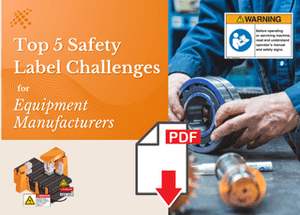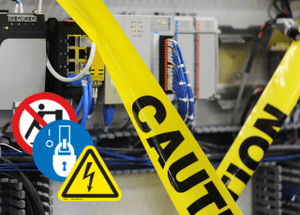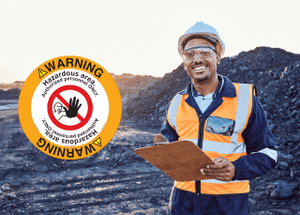PPE Requirements for Employee Safety

PPE Compliance in the Workplace Could Save Lives
Workplaces throughout the nation are almost as unique as a person's fingerprints. The demands of the job require an assortment of machines, equipment, moving parts, chemicals, and substances. The task of ensuring safety is critical, requiring the efforts of business owners, engineers, physicians, workers and government agencies, to name just a few stakeholders. Personal protective equipment (PPE) is one of the most vital measures to protect workers from harm from hearing loss, vision loss, respiratory damage, injury and death. PPE requirements are generally under the control of the Occupational Safety and Health Administration (OSHA), with help from the National Institute of Occupational Safety and Health (NIOSH).
The Prevalence of Workplace
Injuries
It’s an unfortunate fact, but injuries occur at work every
day. A look at just one category of injury illustrates the importance of PPE.
Eye injuries affect about 2,000 people a day at work. While some of the
injuries are minor, as many as 20% result in temporary or permanent vision
loss. The most common causes of eye injury include the following:
- Flying objects such as metal or glass
- Chemicals in the workplace
- Improper use of tools
- Particles
- Dangerous radiation
It’s estimated that 90% of these injuries could be avoided with the right PPE. Workers should be aware of eye hazards in the workplace and notify management. Engineering controls such as shields and/or improved design can eliminate or reduce some hazards. A final method of controlling hazards is the use of protective eyewear, such as safety glasses or masks. It's important that the PPE is used correctly, with proper fitting and that it is designed to withstand the conditions at hand. Failure of workers to use PPE can result in hearing and vision loss that diminish quality of life. Using PPE labels and signs reminds workers of the need to use required protective equipment and helps fulfill a ‘duty to warn’ of hazards present.
In 2018, respiratory protection ranked fourth on OSHA’s top ten most cited violations list , with personal protective and lifesaving equipment — eye and face protection ranking tenth. In 2019, respiratory protection ranked fifth on the same list while personal protective and lifesaving equipment — eye and face protection remained in the tenth spot. These consistent rankings for workplace PPE violations prove that more effective PPE programs need to be put in place across all industries.
Rules for PPE
Compliance in the Workplace
PPE compliance in the workplace is not voluntary. Companies
must follow standards set and enforced by OSHA or face fines and penalties.
While many categories exist, the general rules for PPE compliance in the
workplace are as follows:
- It is the employer's responsibility to identify hazards in the workplace which call for PPE
- The employer must select and require the use of appropriate PPE
- The equipment shall be provided, used and maintained in a sanitary, reliable condition
- Defective PPE must be discarded
- Training must be provided on the usage, fitting and limitations of PPE
- Training must be ongoing and address changes in the workplace and offer retraining options
As mentioned, individual categories and rules exist for such areas as maritime industries, construction and hazardous waste operations. OSHA PPE standards cover such areas of protection as eye and face, respiratory, head and foot, electrical equipment, confined spaces and trips and falls. Each category has its own set of rules. For example, noise exposure requires a company to take action when sound levels average 85 decibels over an 8-hour workday.
The Features of an Effective
PPE Compliance Program
A compliance program that is effective considers such
factors as worker safety, compliance with applicable laws and company standards
and technical feasibility. A risk assessment is a good way to identity hazards
and consider solutions. It’s also important to understand the limitations of PPE.
It doesn’t eliminate the hazard, and it’s only effective if the equipment is
appropriate, worn correctly and worn when necessary. With that in mind, an
effective PPE program will include the following features:
- Hazard and risk assessment
- Attempts to control the hazard
- The selection of effective PPE
- A robust training and education program
- The use of signage to reinforce PPE usage
- Vigorous monitoring of the program
Even though workers stand to lose the most by not using PPE, it’s easy for workers to become complacent over time. Common excuses for not wearing PPE include the equipment doesn’t fit right or takes too much time to put on, or the task is not that dangerous. Therefore, an effective program must find ways to reinforce the use of protective equipment on a regular basis. PPE signage is required in several circumstances, but it can also be used effectively to remind workers to wear their equipment .
The Bottom Line on
OSHA PPE Standards
Protective equipment is the final defense for workers. The
standards that are in place have been developed over time with research and
feedback from workers, business owners and scientists. Employers have multiple
responsibilities when it comes to ensuring PPE is available and in good
condition when necessary. Failure to follow rules can result in injuries, as
well as liability and compliance issues.
Reach out to our team at
Clarion Safety to learn more about how we can help support PPE best practices
for your equipment and workplace.



